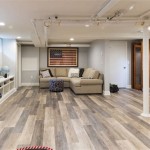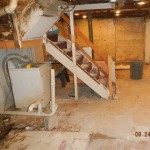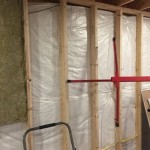How to Soundproof a Basement Ceiling
Soundproofing a basement ceiling can significantly reduce noise transmission between the lower and upper levels of a home. Whether you're looking to create a quiet home theater or simply minimize noise from everyday activities, there are several effective methods to achieve soundproofing.
Factors Affecting Soundproofing
Before starting the soundproofing process, consider the following factors that influence the effectiveness of the solution:
- Noise source: The type of noise (e.g., footsteps, voices, music) will determine the soundproofing materials and techniques required.
- Ceiling structure: Different ceiling materials (e.g., drywall, concrete, wood) have varying soundproofing capabilities.
- Desired level of soundproofing: Determine the level of sound reduction you want to achieve.
Soundproofing Methods
There are several soundproofing methods available, including:
1. Acoustic Ceiling Tiles
Acoustic ceiling tiles are suspended from the basement ceiling, creating an airspace between the tiles and the actual ceiling. This airspace helps absorb sound waves.
2. Soundproof Insulation
Soundproof insulation, such as fiberglass or cellulose, is installed between the ceiling joists to absorb and block sound waves.
3. Soundproofing Compound
Soundproofing compound is a viscous material applied to the ceiling between the joists. It helps dampen sound vibrations.
4. Mass Loaded Vinyl (MLV)
MLV is a dense, flexible material that can be installed on the basement ceiling or between layers of drywall. It acts as a sound barrier, effectively blocking sound waves.
5. Green Glue
Green Glue is a viscoelastic adhesive that is applied between layers of drywall. It helps decouple the layers, reducing sound transmission.
Additional Considerations
In addition to the primary soundproofing methods, consider these additional tips:
- Seal gaps and cracks: Even small openings can allow sound to escape. Seal any gaps around pipes, electrical outlets, and light fixtures.
- Add a layer of drywall: Installing an additional layer of drywall over the existing ceiling can improve soundproofing.
- Use rugs and curtains: Soft furnishings can absorb sound and reduce noise levels.
Conclusion
Soundproofing a basement ceiling can provide a quieter and more comfortable living space. By understanding the factors affecting soundproofing and selecting the appropriate methods, you can effectively reduce noise transmission and create a more peaceful environment.
Soundproofing Ceilings How To Soundproof A Ceiling
6 Cheapest Ways To Soundproof A Basement Ceiling
Soundproofing A Ceiling Unfinished Basement Ideas Cheap Renovations
Nova Basement Remodeling Soundproofing In
Soundproofing A Home Workshop Technical Details Two Teaching Videos
How To Soundproof A Basement Ceiling The Only Guide You Ll Ever Need Better Soundproofing
How To Soundproof A Basement Cow
How To Soundproof A Basement Ceiling Like Pro Living
How To Soundproof Your Basement Ceiling Restoration By L B
How To Soundproof A Basement Ceiling
See Also








